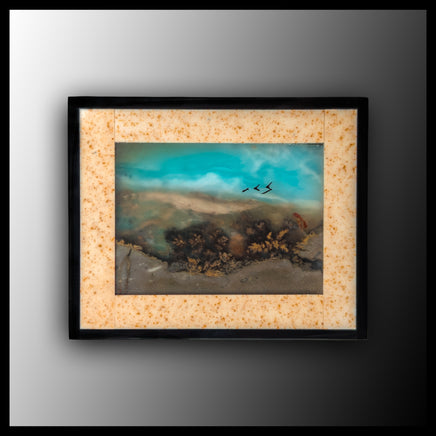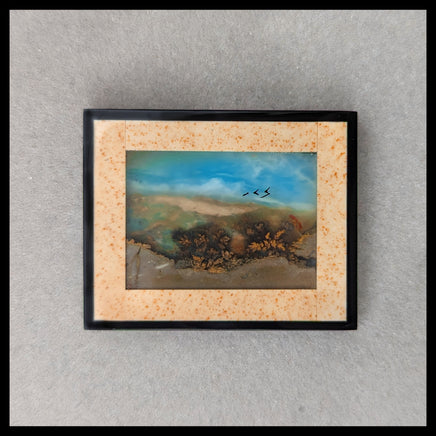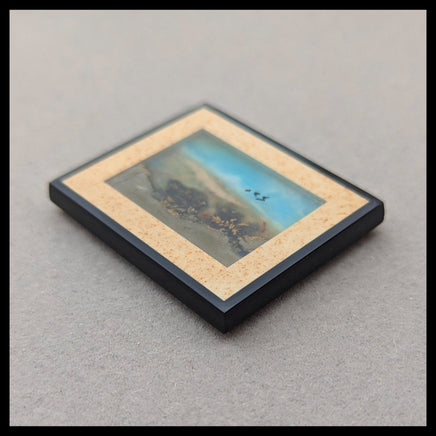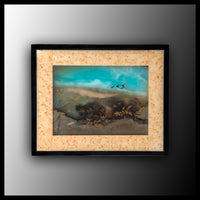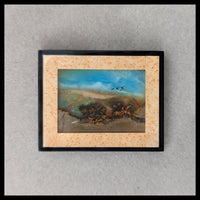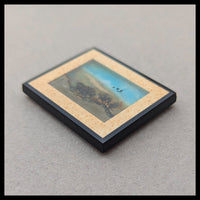This polished intarsia contains multiple layers of stone, with the center containing Montana Moss Agate, Del Norte Plume Agate, Blue Opal, and Turquoise; completed with a double border frame and final black backing. The cabochon is constructed from 13 individual pieces.
The scene created in this intarsia contains significant distance and depth from the five layers used. The furthest visible layer of turquoise gives the saturated blue sky, followed by Peruvian Blue Opal with translucent blue and white coloring that overlays the sky and creates gentle clouds. The horizon line in the distance is the matrix rock of the blue opal, which is covered by two layers of agates that send it further into the distance. The next ground layer comes from a piece of Del Norte Plume Agate, which gives the scene foliage in the form of a few golden and dark brown plumes over the gray earth. Finally, a layer of exceptionally clear Montana Moss Agate tops the center section. This gives the entire piece a uniform, mirror-like polish, along with drops of solid black birds flying across the sky.
Center:
Montana Moss Agate
Del Norte Plume Agate
Blue Opal
Turquoise
Black Basalt
Border:
African Queen Picture Jasper
Black Onyx
39mm x 33mm
Intarsia: The Gem Shop’s founder, Eugene Mueller, has an MFA in painting and has won awards in the Cutting Edge Competition® for his intarsia, and has crafted and/ or designed many of the pieces available here. For thousands of years artisans have been using stone, striving to create the most beautiful scene possible. This process is commonly referred to as Intarsia. Intarsia traces its history back to the Italian Renaissance, and was called pietra dura or pietre dure. This is a term for the inlay technique of using thinly cut and polished stones to create images. The stonework is glued stone-by-stone to a substrate after having previously been sliced and cut in different shape sections; and then assembled together so precisely that the contact between each section is practically invisible. Intarsia items are generally crafted on green, white or black base stones. Traditionally Intarsia pieces have a flat polish, but more contemporary pieces are more freeform and have a dome polish, and are often referred to as “composite cabochons.” Intarsia is a high expression of lapidary art requiring a close mastery. Each piece is eccentric and highly collectible – a true work of art.

